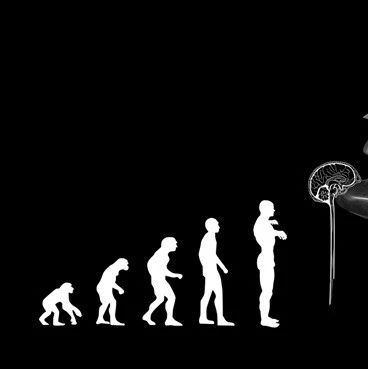导读:研究人员一项针对数百个有自闭症患者家庭的大型研究发现,父母精卵细胞自然突变,会增加下一代患自闭症的风险,而且父亲向下一代遗传这些突变的机率较母亲高出四倍。

这三项新的研究发现发表在《自然》(Nature)杂志上。研究结果显示,被称为外显子组(exome)的部分蛋白编码基因突变,在自闭症中发挥重要作用。
这样的基因突变是在基因编码交叉时发生的,大多对人体无害,但若出现在脑部发展所需的基因组部分,则会引发严重问题。三个研究团队中的一个发现,这些基因突变或许会导致发展成自闭症的风险增加5-20倍。
美国国家卫生研究院(NIH)所属的国家心理健康研究所(NIMH)主任Thomas Insel医生称,“这些研究结果证实,增加患病(自闭症)风险的不是突变基因的规模,而是突变基因的位置。”
这三个研究小组分别由哈佛及麻省理工学院博德研究所(Broad Institute)的Mark Daly、耶鲁大学的Matthew State和华盛顿大学的Evan Eichler领导,他们确认了数百个新的可能最终导致发展成自闭症的可疑基因。
根据美国疾病控制与预防中心(CDC)发布的最新数据,美国每88个儿童中估计有一个自闭症患者。科学家还认为,患自闭症的原因80-90%与基因有关,但多数自闭症仍无法从已知的遗传原因中找到病因。

Sporadic autism exomes reveal a highly interconnected protein network of de novo mutations
Brian J. O’Roak, Laura Vives, Santhosh Girirajan, Emre Karakoc, Niklas Krumm, Bradley P. Coe, Roie Levy, Arthur Ko, Choli Lee, Joshua D. Smith, Emily H. Turner, Ian B. Stanaway, Benjamin Vernot, Maika Malig, Carl Baker, Beau Reilly, Joshua M. Akey, Elhanan Borenstein, Mark J. Rieder, Deborah A. Nickerson, Raphael Bernier, Jay Shendure & Evan E. Eichler
It is well established that autism spectrum disorders (ASD) have a strong genetic component; however, for at least 70% of cases, the underlying genetic cause is unknown. Under the hypothesis that de novo mutations underlie a substantial fraction of the risk for developing ASD in families with no previous history of ASD or related phenotypes—so-called sporadic or simplex families—we sequenced all coding regions of the genome (the exome) for parent–child trios exhibiting sporadic ASD, including 189 new trios and 20 that were previously reported4. Additionally, we also sequenced the exomes of 50 unaffected siblings corresponding to these new (n = 31) and previously reported trios (n = 19)4, for a total of 677 individual exomes from 209 families. Here we show that de novo point mutations are overwhelmingly paternal in origin (4:1 bias) and positively correlated with paternal age, consistent with the modest increased risk for children of older fathers to develop ASD5. Moreover, 39% (49 of 126) of the most severe or disruptive de novo mutations map to a highly interconnected β-catenin/chromatin remodelling protein network ranked significantly for autism candidate genes. In proband exomes, recurrent protein-altering mutations were observed in two genes: CHD8 and NTNG1. Mutation screening of six candidate genes in 1,703 ASD probands identified additional de novo, protein-altering mutations in GRIN2B, LAMC3 and SCN1A. Combined with copy number variant (CNV) data, these results indicate extreme locus heterogeneity but also provide a target for future discovery, diagnostics and therapeutics.
文献链接:https://www.nature.com/nature/journal/vaop/ncurrent/full/nature10989.html

Patterns and rates of exonic de novo mutations in autism spectrum disorders
Benjamin M. Neale, Yan Kou, Li Liu, Avi Ma’ayan, Kaitlin E. Samocha, Aniko Sabo, Chiao-Feng Lin, Christine Stevens, Li-San Wang, Vladimir Makarov, Paz Polak, Seungtai Yoon, Jared Maguire, Emily L. Crawford, Nicholas G. Campbell, Evan T. Geller, Otto Valladares, Chad Schafer, Han Liu, Tuo Zhao, Guiqing Cai, Jayon Lihm, Ruth Dannenfelser, Omar Jabado, Zuleyma Peralta
Autism spectrum disorders (ASD) are believed to have genetic and environmental origins, yet in only a modest fraction of individuals can specific causes be identified1, 2. To identify further genetic risk factors, here we assess the role of de novo mutations in ASD by sequencing the exomes of ASD cases and their parents (n = 175 trios). Fewer than half of the cases (46.3%) carry a missense or nonsense de novo variant, and the overall rate of mutation is only modestly higher than the expected rate. In contrast, the proteins encoded by genes that harboured de novo missense or nonsense mutations showed a higher degree of connectivity among themselves and to previous ASD genes3 as indexed by protein-protein interaction screens. The small increase in the rate of de novo events, when taken together with the protein interaction results, are consistent with an important but limited role for de novo point mutations in ASD, similar to that documented for de novo copy number variants. Genetic models incorporating these data indicate that most of the observed de novo events are unconnected to ASD; those that do confer risk are distributed across many genes and are incompletely penetrant (that is, not necessarily sufficient for disease). Our results support polygenic models in which spontaneous coding mutations in any of a large number of genes increases risk by 5- to 20-fold. Despite the challenge posed by such models, results from de novo events and a large parallel case–control study provide strong evidence in favour of CHD8 and KATNAL2 as genuine autism risk factors.
文献链接:https://www.nature.com/nature/journal/vaop/ncurrent/full/nature11011.html

De novo mutations revealed by whole-exome sequencing are strongly associated with autism
Stephan J. Sanders, Michael T. Murtha, Abha R. Gupta, John D. Murdoch, Melanie J. Raubeson, A. Jeremy Willsey, A. Gulhan Ercan-Sencicek, Nicholas M. DiLullo, Neelroop N. Parikshak, Jason L. Stein, Michael F. Walker, Gordon T. Ober, Nicole A. Teran, Youeun Song, Paul El-Fishawy, Ryan C. Murtha, Murim Choi, John D. Overton, Robert D. Bjornson, Nicholas J. Carriero, Kyle A. Meyer, Kaya Bilguvar, Shrikant M. Mane, Nenad Šestan, Richard P. Lifton
Multiple studies have confirmed the contribution of rare de novo copy number variations to the risk for autism spectrum disorders. But whereas de novo single nucleotide variants have been identified in affected individuals, their contribution to risk has yet to be clarified. Specifically, the frequency and distribution of these mutations have not been well characterized in matched unaffected controls, and such data are vital to the interpretation of de novo coding mutations observed in probands. Here we show, using whole-exome sequencing of 928 individuals, including 200 phenotypically discordant sibling pairs, that highly disruptive (nonsense and splice-site) de novo mutations in brain-expressed genes are associated with autism spectrum disorders and carry large effects. On the basis of mutation rates in unaffected individuals, we demonstrate that multiple independent de novo single nucleotide variants in the same gene among unrelated probands reliably identifies risk alleles, providing a clear path forward for gene discovery. Among a total of 279 identified de novo coding mutations, there is a single instance in probands, and none in siblings, in which two independent nonsense variants disrupt the same gene, SCN2A (sodium channel, voltage-gated, type II, α subunit), a result that is highly unlikely by chance.
文献链接:https://www.nature.com/nature/journal/vaop/ncurrent/full/nature10945.html










